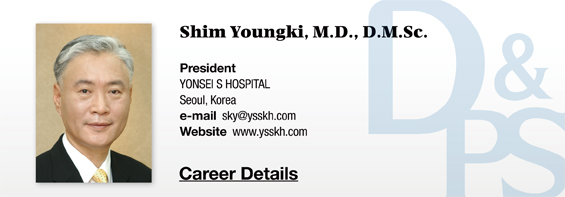e. Temporary urticaria is common with use of polidocanol. It develops 2-3 minutes after injecion around the injection site and resolve in 30 minutes or can persist for hours. This phenomenon worsens with a higher concentration slcerosing agent.
f. Bruising occurs when blood vessels are punctured or counter punctured during sclerotherapy by a needle. It starts with petechia which spreads subcutaneously. Once apparent, bruising continues for weeks. It is frequent in patients of fragility type.
g. Patients can feel stiffening pain after injection of the slcerosing agent. Some complain of tightening pain. However, most pain is resolved in 30 minutes. Polidocanol was initially developed as an analgesic and causes little pain (at concentrations of 1% or less), but some patients complain of dull pain for 1-2 weeks after injection.
h. Small nodule fibrosis can be observed after injection into large veins (4~6mm). Fibrosis gradually is absorbed and resolved in 6 months to a year. It is replaced by hard, pigmented and sometimes fibrous ligament tissues. No other therapy than comforting the patient and and applying compression stockings are necessary. However, if the patient complains of discomfort due to persistent cord formation, the cord can be severed in a 5cm interval.
i. Telangiectatic matts or blush area can develop in 5-24% of patients with telangiectasia and with superficial vein treatment (Duffy, 1998). The vascular plexus of smaller diameters (0.03~1.0mm) develop around sclerosed vessels. They are more common in the thigh or around the knee joint, especially, in much smaller vessels in the distal or medial areas of the previously treated veins. They are caused when secondary vessels develop as a reaction to the hypoxia around the treated veins. This phenomenon can be commonly observed after ligation of varicose veins or traumatic injury. Most cases are resolved naturally in time but when persisting over a long period of time, very small needle sclerotherapy can remove them. However, some patients do not respond to treatment.
HELIOSⅡ/LOTUSⅡ/HYPERION – Manufacturer: LASEROPTEK(www.laseroptek.com)
Conclusion
Recent studies consistently report comparison of outcomes between surgery and sclerotherapy showed sclerotherapy to be non-inferior to surgery, thanks to compression stockings. However, some scholars also report that the early outcomes of sclerotherapy may be comparable to surgery but long-term follow up revealed that sclerotherapy is not as effective as surgery.
Sclerotherapy is particularly effective in small superficial varicose veins, dermal spider angioma and is useful in varicose veins of the perforating veins, varicose veins recurring after surgery, or post-surgery residual varicose veins. Sclerotherapy can be applied from the beginning in place of surgery. In the Sigg technique, the intial approach partially treats varicose veins and the treatment area is gradually expanded to cover all varicose veins. Although the final outcome is not as good as that of surgery, sclerotherapy does not involve hospitalization or surgery. Therefore, it is a very popular method in Europe. I am convinced that accurate determination of indications can bring results comparable to surgery.
As explained above, sclerotherapy can provide painless treatment of telangiectasia and varicose veins. I hope sclerotherapy is established as a new method of aesthetic treatment.
-To be continued-





















